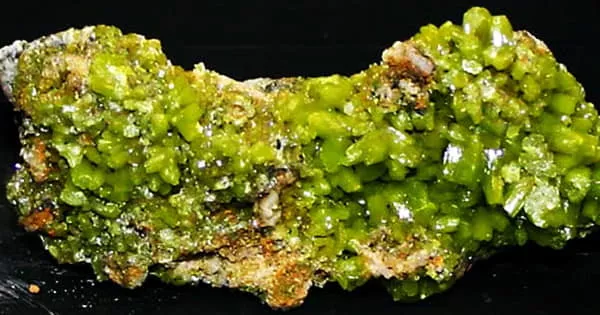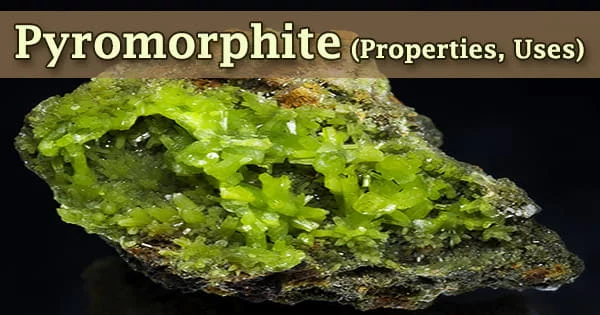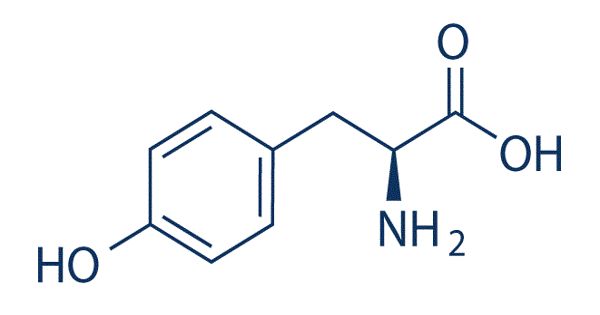Pyromorphite, also known as Traubenblei in the past, is a phosphate mineral composed of lead chloride phosphate (Pb5(PO4)3Cl), which is a minor lead resource. Crystals are frequent and take the shape of a hexagonal prism with the basal planes terminating it, occasionally coupled with thin hexagonal pyramid sides. It forms highly brilliantly colored, massive, barrel-shaped crystals or globular masses in the oxidized zone of lead deposits with galena, cerussite, and limonite.
Pyromorphite is an isomorphous hexagonal mineral that belongs to the Apatite group. Green, yellowish, brownish, greyish, or white barrel-shaped hexagonal prisms, in clusters or as druses on matrix are the most common forms. Individual crystals are frequently etched or changed, giving them a hopper-like appearance. It’s an uncommon lead chlorophosphate mineral with masses, fibers, botryoidal, tabular crystals, and hexagonal prisms as crystals.
It’s not unusual to see crystals with a barrel-like shape. There are also globular and reniform lumps. It belongs to a group of minerals that includes mimetite (Pb5(AsO4)3Cl) and vanadinite (Pb5(VO4)3Cl), and their surface characteristics are so similar that chemical testing are usually the only way to tell them apart. It has a structure and look that is extremely similar to Mimetite, and it may be largely replaced by it.

In fact, Pyromorphite and Mimetite are sometimes nearly indistinguishable from one another, and one may be mistaken for the other. In the pyromorphite structure, arsenic and vanadium frequently substitute phosphorus. Seeing it in its prismatic crystal structure is the rarest form. Rarely found, these specimens may sell for tens of thousands of dollars. Green lead ore and brown lead ore were once used interchangeably.
The most common hue of this mineral is light green, but it can also be white, brown, orange, yellow, or even colorless. M. H. Klaproth identified the phosphate chemically for the first time in 1784, and J. F. L. Hausmann called it pyromorphite in 1813. The stone was given the names “fire” and “form” in Greek. Pyromorphite was given this name because of the shape it acquires when melted and cooled. Pyromorphite is mined in the United States, Australia, Germany, the United Kingdom, China, and Argentina.
Pyromorphite is found in nature combined with mimetite and vanadinite; these combinations, known as solid-solution series, demonstrate continuous chemical fluctuation between the pure compounds. The specific gravity is 6.5 – 7.1, and the hardness ranges from 3.5 to 4. There may be a slow transition from pyromorphite to mimetite due to isomorphous substitution of phosphorus by arsenic.
Pyromorphite is a stone that energizes and connects the solar plexus and heart chakras. This stone takes the expression “if there’s a will, there’s a way” to new heights. Polysphaerite (because of the globular form), miesite (from Mies in Bohemia), nussierite (from Nuizière, Chénelette, near Beaujeu, Rhône, France), and cherokine (from Cherokee County, Georgia) are examples of calcium isomorphically replacing lead.
Pyromorphite belongs to a category of minerals that are structurally and chemically similar to apatite. It is a minor lead ore that occurs in the presence of more plentiful lead minerals. Collectors prize specimens from classic occurrences as well as newer discoveries of brilliant neon green Pyromorphite, which sell for astronomically high prices. Pyromorphite directs this energy toward your present aims and motivates you to take action in order to achieve your goals.
Information Sources:
















